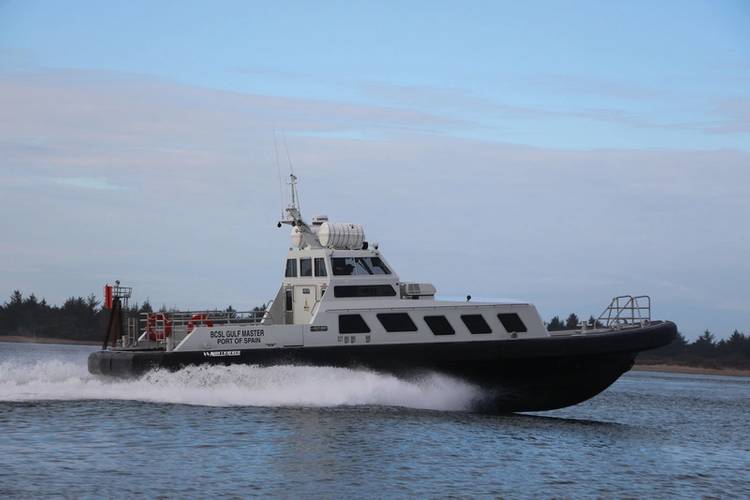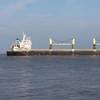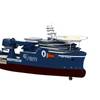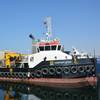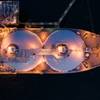Workboat Design: MultiMission Vessels have adaptable platforms
Drug interdiction. Crew transport in hostile waters. Law enforcement. Rescue operations. Passenger vessels. Today’s MultiMission Vessels (MMVs) are a diverse collection of workboats characterized by adaptable platforms, customized with standard accessories.
A larger budget for electronics and multiple, smart, navigational screens and MDTs challenge the interior configuration of already crowded MMVs, increasingly built with matching FEMA port security grant funds for joint venture operations.
More monohull patrol vessels monitor illegal fishing, while providing flexibility to lead disaster relief, rescue operations, or serve as a platform for research.
“There are workstations and you need a place to run ticket machines, these MDTs or Mobile Data Terminals,” said Jeff Clark of WorkSkiff. "Patrol cars and fire trucks are combined into one, on the water, and work with limited space on the boat. The same hull is lengthened or shortened, reconfigured, moving the wheelhouse forward.”
“We have a police package, with lights, sirens and underwater lights, and big fendering, said Clark. “Vessels are used for many purposes, to recover disabled fishing boats and perform rescue work, or as a dive boat for victims in distress, and law enforcement.
TULALIP Indian Fish and Game Agency has the WorkSkiff 24 x 8.5-foot MMV, an aluminum boat with an engine bracket and walls around the walk around pilot house built for Tulalip for fisheries management, law enforcement, search and rescue, and fire fighting.
“Accessories allow us to personify boat in a specific way,” said Clark. This is built from a commercial perspective, not a conversion, built to run hard 24/7 and last for 20 years.”
WorkSkiff contracted with Boksa Marine Design to offer a series hulls outfitted to meet minimum responses, from oil spill response to police work. The deep vee or modified vee or flat bottom can be modified to be mission and budget sensitive.
The wheelhouse is far to stern, allowing space for deck equipment and personnel.
State and law enforcement can use same hull as the Indians by reconfiguring and moving wheelhouse forward
Working decks accommodate a rescue craft as well as a rigid-hulled inflatable boat (RHIB), with davit.
“We provide a basic design and modify,” said Nick Boksa. Boksa Marine Design has designed and engineered the WorkSkiff fleet and many military patrol boats, MMVs and army corp research vessels.
Characterized with a rugged, robust look and excellent seakeeping quality, Boksa said speed, flexibility and being reusable with minor tweaks is top of mind when designing MMVs.
“The boat can be used as a surgery vessel one mission, or as a harbor fire boat for another operator,” said Boksa. “Our whale watch tour boat would also be a Navy force protection vessel.
It’s the same platform with different purposes because there is different outfitting to meet the mission, from water monitors for fire fighting to machine gun mounts or different power systems on the same hull. Our BMD series for North River Boats are pilot boats that could be crew vessels, too. We consider the operating environment, fresh water lake, river to near shore and offshore.”
Boksa tends to like aluminum, light, strong, flexible and doesn’t require tooling for modification.
“Our first big project with Nick Boksa wound up being a keel-up design,” said Mike Blocher of North River Boats. “We’ve produced five, keel up designs together and developed a series of pilot and crew transfer boats for pilot associations, including a 52-foot crew transfer boat, Endeavour, and 58-foot Gulf Master.”
Endeavour ran workers to Venezuela amid turmoil, cruising unsafe waters. Transferring crew around oil rigs for joint operations, the cabin was designed to transport workers and supplies. The cabin layout was designed with crew seating in mind, and also included working tables for computers and a first aid station for medical transport.
“From the exterior, you can’t tell there is a fully enclosed operation enclosure.” said Blocher. “You can’t tell the glass is any different. It has a safety film applied to prevent breakage.They were worried about someone coming in and taking over the vessel during operation. The issue is to prevent takeover.”
Some are designed with pressurized cabins for protection of personnel detecting of CBRNE, where air is pulled from outside and meter tested. Air is filtered coming in with no outside contaminants.
There’s a lot to consider incorporating that,” said Blocher. “Thermal imaging multiple navigation displays, satellite overlays, engine data on the dash, dual 12-inch displays, takes up room.”
Citing $6,000 - 8,000 as the previous threshold for electronics per vessel, today’s electronics budget can easily exceed over $50,000.
“We must incorporate everything and see that it works,” said Blocher. It is Increasingly difficult to get everything in these boats. Every single boat is a challenge, but we complete a full turnkey project incorporating everything to personal gear and life jackets.”






